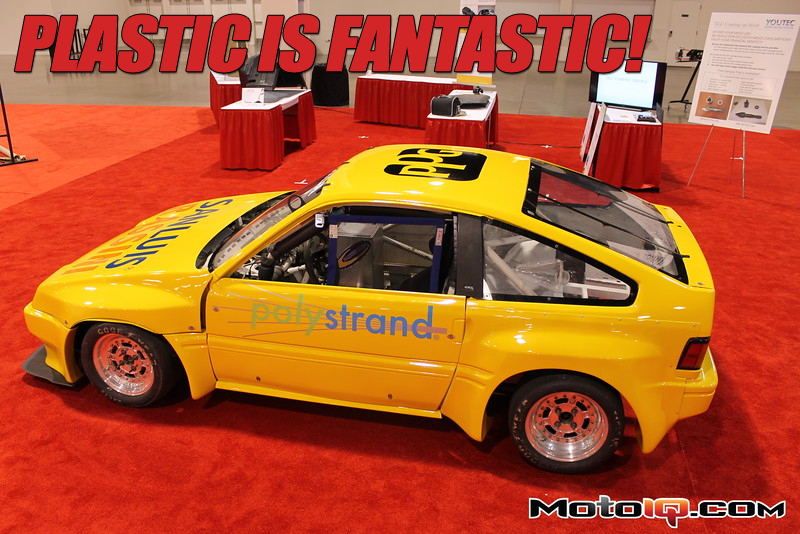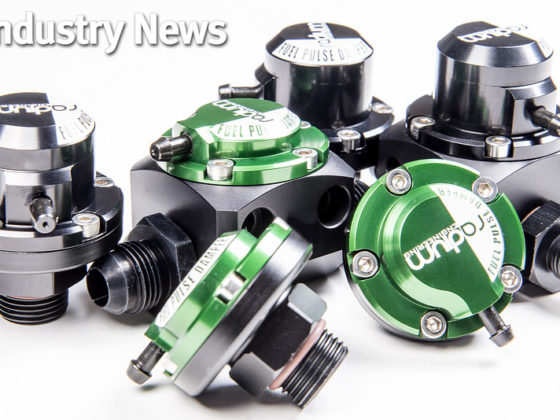
Polystrand GT-Lite CRX: Part 4 – Bringing the Design Concept to Life!
As we left off in the previous installment, we’d completed our prototype suspension design, done some analysis on the springs and arms, and sent the dissected chassis off to the body shop to get some much needed love. Now comes the part that is almost as much fun as driving – bringing the design concept to life!

 A trip to the bodyshop to check on the progress. We wanted something bright, and, of course, with PPG providing such great support, we chose from the PPG palette. Yellow is always a good racecar color, and we narrowed it down to about 5 choices. This particular color is a GM color, called “Velocity Yellow.” Appropriate name for a racecar paint, we figured.
A trip to the bodyshop to check on the progress. We wanted something bright, and, of course, with PPG providing such great support, we chose from the PPG palette. Yellow is always a good racecar color, and we narrowed it down to about 5 choices. This particular color is a GM color, called “Velocity Yellow.” Appropriate name for a racecar paint, we figured.If you’d like to catch up from the beginning, click here for part 1 and here for part 2. A lot has happened since we last updated the story, and we’re looking forward to digging into the driveline as well in future installments. We’re also very excited to welcome some new companies to the team to help us in our quest for more speed – AEM Electronics, Brian Crower, Inc., Action Clutch, and Oneiric Systems, Inc. Along with PPG and Rassini, we’re building what we hope will be a formidable team.
 You can see some of the subassembly starting to take shape. We’re building more than one – gotta have a spare, right? Plus, the extra IRS assembly will make a nice stand-alone display for the trade shows we need to prepare for. On the lower left, you can see the “tab and slot” methodology we used to replace the forming operations our vendors didn’t have time for. Tony referred to this method as “castle cutting,” since it resembles the crenellations often seen on the top of old castles.
You can see some of the subassembly starting to take shape. We’re building more than one – gotta have a spare, right? Plus, the extra IRS assembly will make a nice stand-alone display for the trade shows we need to prepare for. On the lower left, you can see the “tab and slot” methodology we used to replace the forming operations our vendors didn’t have time for. Tony referred to this method as “castle cutting,” since it resembles the crenellations often seen on the top of old castles.Our future plans for B-series power should make for an interesting build – since the GT-Lite class allows a wide range of powerplants across a variety of manufacturers, engines are intake restricted based on things like displacement and number of valves. We’re planning on a B18B, which means that we’ll have to feed all of the intake air through a restrictor with a diameter of only 22.5mm – less than the size of a quarter! Right now, though, we need to get this thing rolling.
 Here’s a little better picture. You can see here how the spring mounting pockets can slide in and out in their adjustment slots.
Here’s a little better picture. You can see here how the spring mounting pockets can slide in and out in their adjustment slots.In order to get this done in the next five weeks, it would take a few different vendors, a lot of elbow grease, and a fair dose of scrambling around shipping things around the country. In order to stick to our timeframe, Tony did a lot of legwork lining up the right vendors – and we determined that the flat pieces would be done by one shop, the formed parts at another, and we’d do the tubular parts and machined parts ourselves. Hopefully, everything would arrive on time and fit together properly so that Chris and Tony could assemble, weld, and install the IRS module before the deadline.



